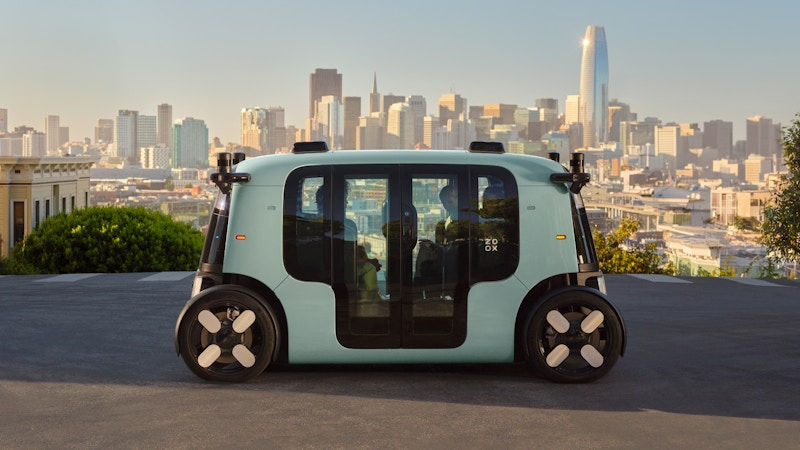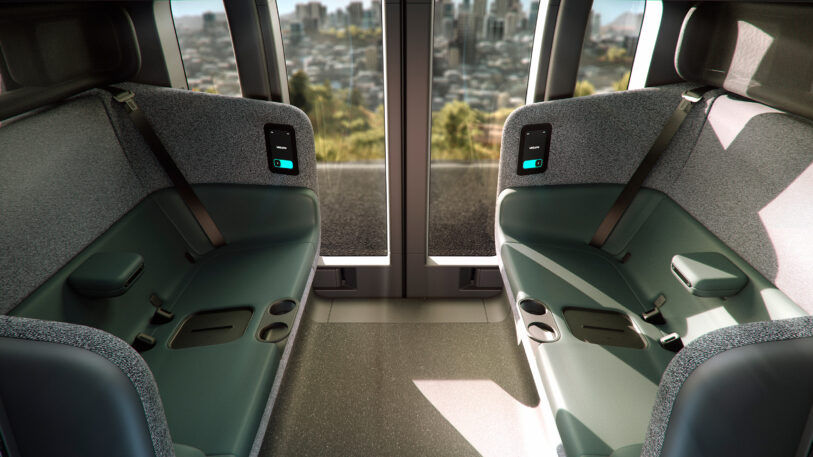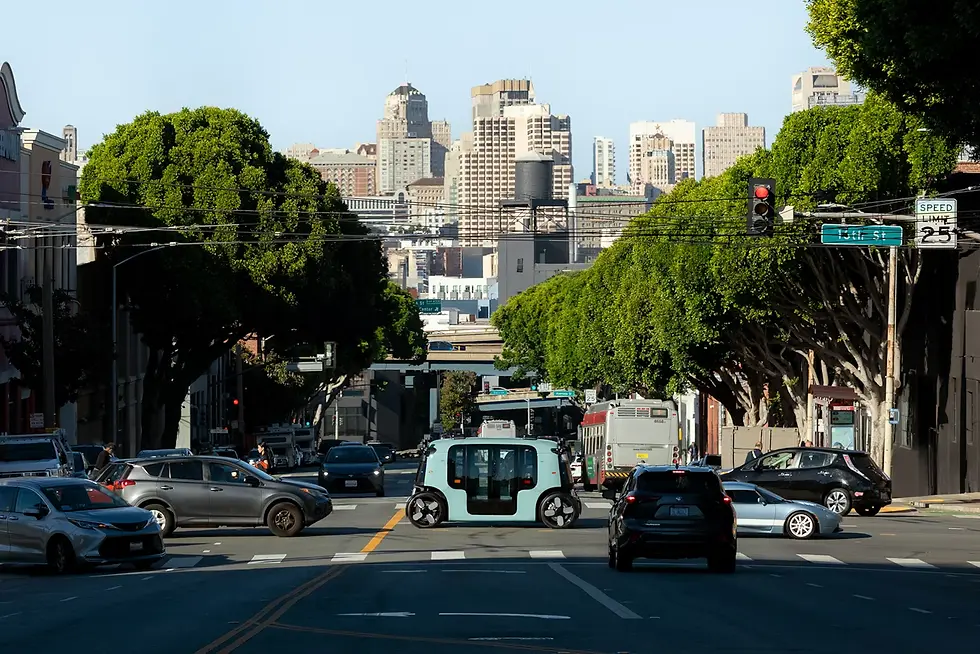Why Riding Backwards in a Robotaxi Might Make You Queasy: A Lesson from San Francisco’s Zoox Shuttle
- Coralie Englebert
- 16 juil.
- 3 min de lecture
Let’s talk about motion sickness, robotaxis, and why riding backwards in an autonomous vehicle might not be your next favorite commute.
In San Francisco, the future is rolling quietly through SoMa and the Mission District in the form of Zoox — a robotaxi that looks more like a giant toaster than a traditional car. Unlike your usual rideshare, this self-driving shuttle has no steering wheel, no driver, and here’s where things get interesting: no front or back. It moves bidirectionally, meaning it can zip forward or backward without needing to turn around.
That sounds cool until you’re the one riding backwards.

Recently, two reporters from The Standard were invited to hop inside this futuristic “gondola on wheels” and walked away slightly nauseous. Why? Because of the inward-facing seating arrangement: four seats in a circle, two facing forward, two facing backward. In a human-driven car, we almost always face the direction we’re moving. But in Zoox, that’s a 50/50 gamble.
And while Zoox does offer guidance in the app for those prone to motion sickness, there’s not much you can do if everyone wants the same seat.
Why Does Riding Backwards Make You Feel Sick?
Here's where science steps in. Motion sickness happens when your inner ear senses movement, but your eyes (and sometimes your body) don’t match up with that perception. When you can’t see where you’re going (like in a backward-facing seat), your brain gets confused. This sensory mismatch is what triggers nausea, dizziness, and that “please-make-it-stop” feeling.
In the Zoox, that sensation is amplified. Since there’s no windshield to look through, no road view ahead, and no driver behavior to anticipate, passengers can't predict stops, starts, or turns. And since the vehicle doesn't always accelerate or brake as smoothly as a traditional human driver, it creates the perfect storm for motion-induced discomfort.

The Zoox Experience: Disneyland Meets AI
To be fair, the Zoox ride sounds like a quirky theme park attraction, which makes sense, considering one of its cofounders once described the service as “Disneyland on the streets.” The interior features personalised climate control, a shared music system, and clever touches like overhead lights and wireless charging.
There’s also plenty of tech crammed inside: LiDAR, radar, thermal sensors, and AI processing to handle city traffic. Safety features include pullovers if someone isn’t buckled and even alerts if you leave behind your phone.

So What’s the Big Takeaway?
While robotaxis like Zoox are undoubtedly impressive, they still face a few human-centric hurdles and motion sickness is one of them. The novelty of riding backward in a smart, steering-wheel-less pod can wear off fast when your stomach starts doing loop-the-loops.
As autonomous mobility continues to evolve, designers will need to balance innovation with basic passenger comfort. If people are going to use these vehicles regularly, making them feel good, not just safe, is essential.
Until then, if you’re lucky enough to get a ride in a Zoox? Take the forward-facing seat.
Fun Fact: The name Zoox comes from zooxanthellae, a type of algae that lives in harmony with coral reefs. Like its namesake, Zoox wants to live in harmony with cities, even if it occasionally makes your stomach revolt.





Commentaires